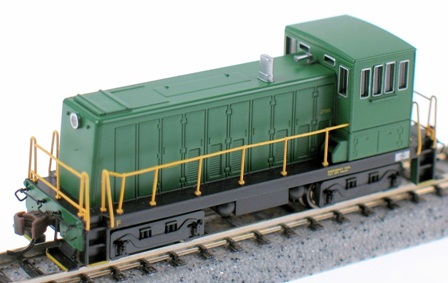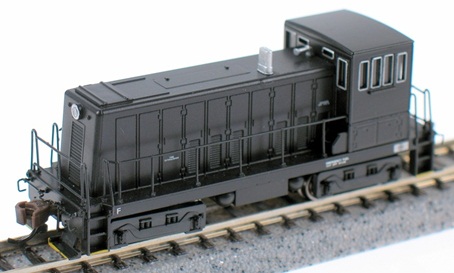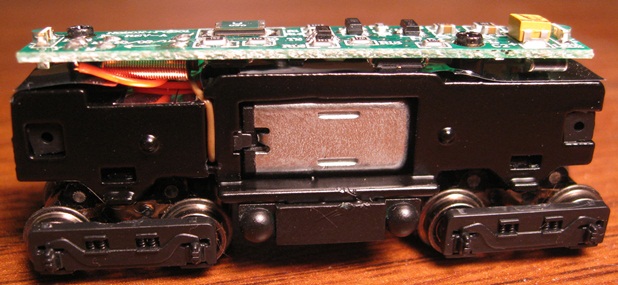





Introduced: 2010
Like Bachmann's earlier 44-tonner model, these 70-tonners are nice looking and exceptionally fine running little engines. They are available in three different variations - "Phase 1" (flat front-end, round headlight), "Phase 2" (grilled front-end, square headlight) and "Phase 2 Variant" (grilled front-end, round headlight). For those that care about such things, I'm told that the configuration of the side doors on all three is correct for neither a Phase 1 nor a Phase 2 (and in fact, only correct for a "Phase 3" - all of which were sold as exports). I've also read various other "rivet-counting" type complaints about some of the shell detailing, but I doubt most people are going to worry about such things (I know I don't).
Internally, these models are very much similar to the aforementioned 44-tonner model. However, the two are not quite identical -

The chassis is all metal and split-frame. The motor is rectangular, closed-sided and extremely small (and presumably 3-poles). All wheels provide pickup (no traction tires), with current transferred from the trucks into the chassis by way of bronze wipers. All wheels are geared and all gearing is plastic. Directional lighting is provided on either end of the decoder (which is screwed to the top of the chassis). Two contacts on the bottom of the decoder collect current from the chassis. Two more decoder-board contacts conduct current to the motor. Wheels are low-profile, so no problems on Code-55 rails. The shell is a one-piece molding. The window inserts are glued in place (which is kind of annoying). Couplers are Bachmann's proprietary automatic/magnetic couplers (similar to McHenrys, albeit a bit larger).
As noted above, the internals of the 70T are not quite the same as those of the 44T. The 70T's chassis is just a hair longer than the 44T's (about an 1/8") and the contours of the two chasses are a bit different (most noteably, the front of the 70T has a bit of an angle to it, whereas the 44T's "front" is straight up and down). Also, although the two decoders share the same basic size and shape, the actual electronic components are quite different. One downside with the 70T chassis is that the trucks don't pop off quite as readily as do the 44T's. Unfortunately, this makes cleaning them a bit more difficult - IE, the shell must be removed in order to loosen up the chassis screws (and thus free up the trucks).
Performance is outstanding in every way - absolutely smooth and whisper quiet. Slow-speed creep is exceptional, and the top-end speed is very realistic. Pickup is sensational, as I can creep mine through non-powered turnouts with nary a hitch. Better still, these are surprisingly strong pullers. Mine has no problems hauling eight cars on level track (although any more than that and the wheels start slipping on curves). But that's certainly more than adequate power for an industrial switcher (exceeding even the prototype in that regard). Overall, just a really outstanding locomotive in every way.
One note - Given their extremely small size and light weight, these locos are pretty finicky when it comes to any sort of grunge on the wheels and/or the wipers that conduct current from the trucks to the chassis. So, one must be fairly vigilant about keeping things clean and shiny.
To remove the shell, simply spread the sides apart to free it from the two "bumps" on each side of the chassis. It should pop off fairly readily at that point. When putting the shell back on, note the orientation of the white arrow (pointing "forward") on the decoder board.
Features -
- DCC-equipped for speed, direction, and lighting
- Dual-mode NMRA-compliant decoder
- 8-wheel drive
- Precision can motor
- Die-cast chassis
- Front and rear metal cut levers
- N scale RP25 wheel contours
- E-Z Mate Mark II couplers
Trivia - Randgust released a GE 70 tonner in kit form back in 2009 (actually the first 70 tonner available in N scale). It was designed to run on a Kato 11-105, 11-106, or 11-107 power chassis.

Grade: A